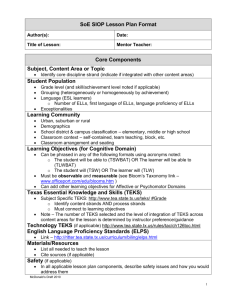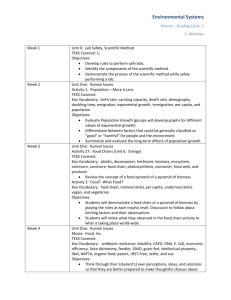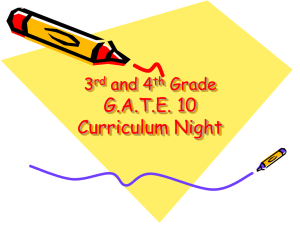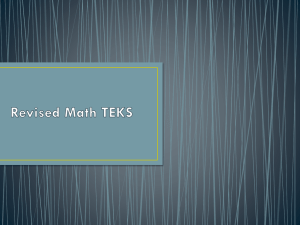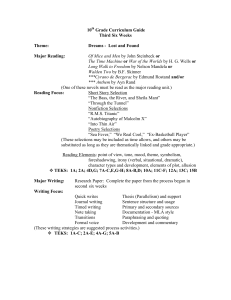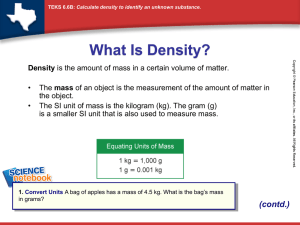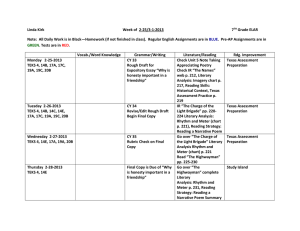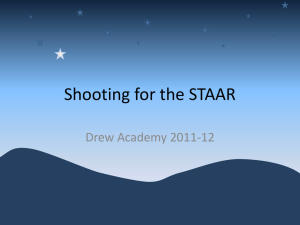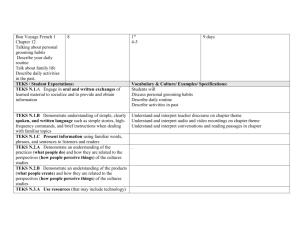6th Grade ELA Curriculum Scope & Sequence (2013-2014)
advertisement
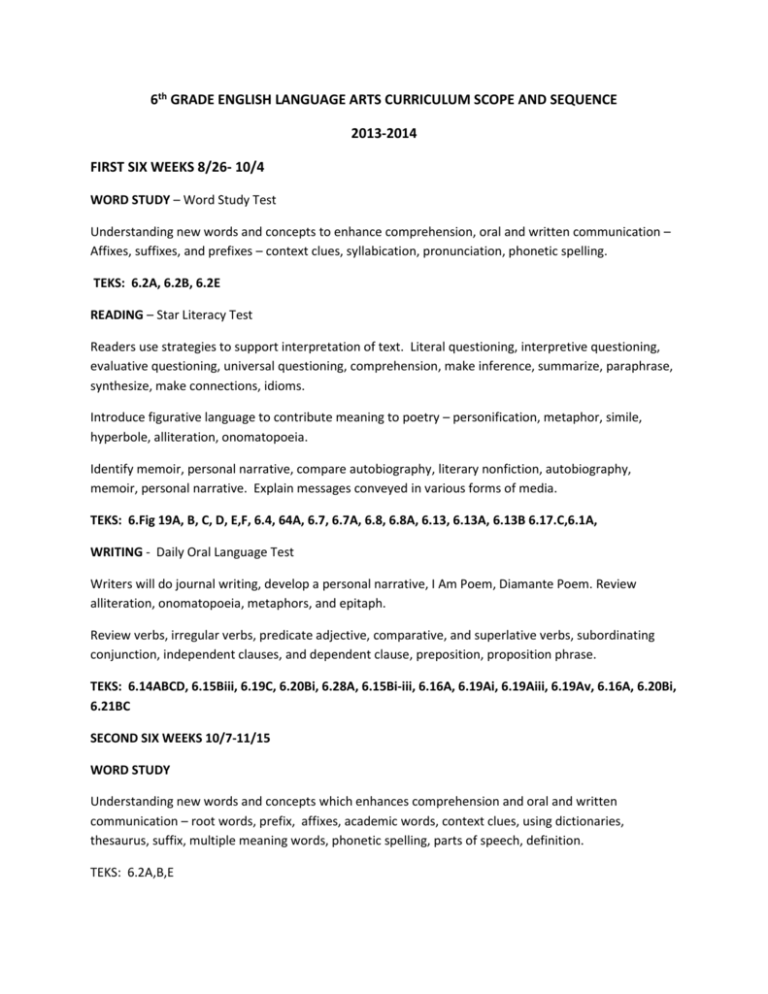
6th GRADE ENGLISH LANGUAGE ARTS CURRICULUM SCOPE AND SEQUENCE 2013-2014 FIRST SIX WEEKS 8/26- 10/4 WORD STUDY – Word Study Test Understanding new words and concepts to enhance comprehension, oral and written communication – Affixes, suffixes, and prefixes – context clues, syllabication, pronunciation, phonetic spelling. TEKS: 6.2A, 6.2B, 6.2E READING – Star Literacy Test Readers use strategies to support interpretation of text. Literal questioning, interpretive questioning, evaluative questioning, universal questioning, comprehension, make inference, summarize, paraphrase, synthesize, make connections, idioms. Introduce figurative language to contribute meaning to poetry – personification, metaphor, simile, hyperbole, alliteration, onomatopoeia. Identify memoir, personal narrative, compare autobiography, literary nonfiction, autobiography, memoir, personal narrative. Explain messages conveyed in various forms of media. TEKS: 6.Fig 19A, B, C, D, E,F, 6.4, 64A, 6.7, 6.7A, 6.8, 6.8A, 6.13, 6.13A, 6.13B 6.17.C,6.1A, WRITING - Daily Oral Language Test Writers will do journal writing, develop a personal narrative, I Am Poem, Diamante Poem. Review alliteration, onomatopoeia, metaphors, and epitaph. Review verbs, irregular verbs, predicate adjective, comparative, and superlative verbs, subordinating conjunction, independent clauses, and dependent clause, preposition, proposition phrase. TEKS: 6.14ABCD, 6.15Biii, 6.19C, 6.20Bi, 6.28A, 6.15Bi-iii, 6.16A, 6.19Ai, 6.19Aiii, 6.19Av, 6.16A, 6.20Bi, 6.21BC SECOND SIX WEEKS 10/7-11/15 WORD STUDY Understanding new words and concepts which enhances comprehension and oral and written communication – root words, prefix, affixes, academic words, context clues, using dictionaries, thesaurus, suffix, multiple meaning words, phonetic spelling, parts of speech, definition. TEKS: 6.2A,B,E READING Readers create connections to make text personally relevant and useful using plot, conflict, rising action, climax/turning point, falling action, denouement/resolution, exposition, and conflict, dialect conversational voice, theme, point of view, first-person, third-person, inference, theme, point of view, setting, historical, cultural, media, technique. Readers use stylistic element, figurative language, personification, hyperbole to make text personally relevant. Fictional text, various literary text – plays, etc. TEKS: 6.Fig.19A,B,C,D,E,F, 6.3A,C, 6.6A,B,C, 6.14 A,B, 6.15A,A I,AII,AIII, WRITING Free writing, write an imaginary story in first or third person point of view including sensory language, dialogue, setting, plot, conflict, rising action, climax/turning point, falling, action, denounement/resolution. Introduce indefinite pronoun, conjunctive adverbs, active verb, passive verb, active voice, passive voice, subordinating conjunction, complete sentence, simple sentence, compound sentence, independent clause, dependent clause, use parenthesis, brackets, and ellipsis in writing if applicable. Edit, revise and publish writing. TEKS: 6.17C,6.19A,AVI,AVII6.19C,6.20B,BII THIRD SIX WEEKS – 11/18-1/16 WORD STUDY Understanding new words and concepts which enhances comprehension and oral and written communication – suffix, multiple meaning words, context clues, root words, analogy, prefix, foreign words, foreign phrases, dictionaries, thesaurus. TEKS: 6.2A,B,C,E, 6Fig.19B,C,D,E,F Students choose structure to organize information and communicate meaning with strategies to support interpretation of expository text and procedural text using cause and effect, organizational pattern, main idea, author’s viewpoint, summary, sequential order, descriptive/classification scheme, graphic organizer, order of importance, proposition and support, problem and solution, media, stated purpose, implied purpose, synthesize, logical connection to understand. TEKS: 6.9A, 6.10A,C,D, 6.13A,B, 6.14A,B,C,D Authors establish a purpose to create and express a topic using active voice, passive voice, thesis or controlling idea by writing expository writing with an introduction and conclusion using non-count nouns, parenthesis, brackets, ellipsis, and conjunctive adverbs, transitional words or phrases – revising using the 4 R’s of revision, editing and publishing. Authors present their writing to an audience using eye contact, volume, enunciation. Authors will write an informal letter using the correct form for letter writing – date salutation, closing. TEKS: 6.14E, 6.19A,AI,AIII,AV,AVI,AVII,C,6,20A,AI,AII,AIII,6.20B,BI,6.21A,C,6.26A



